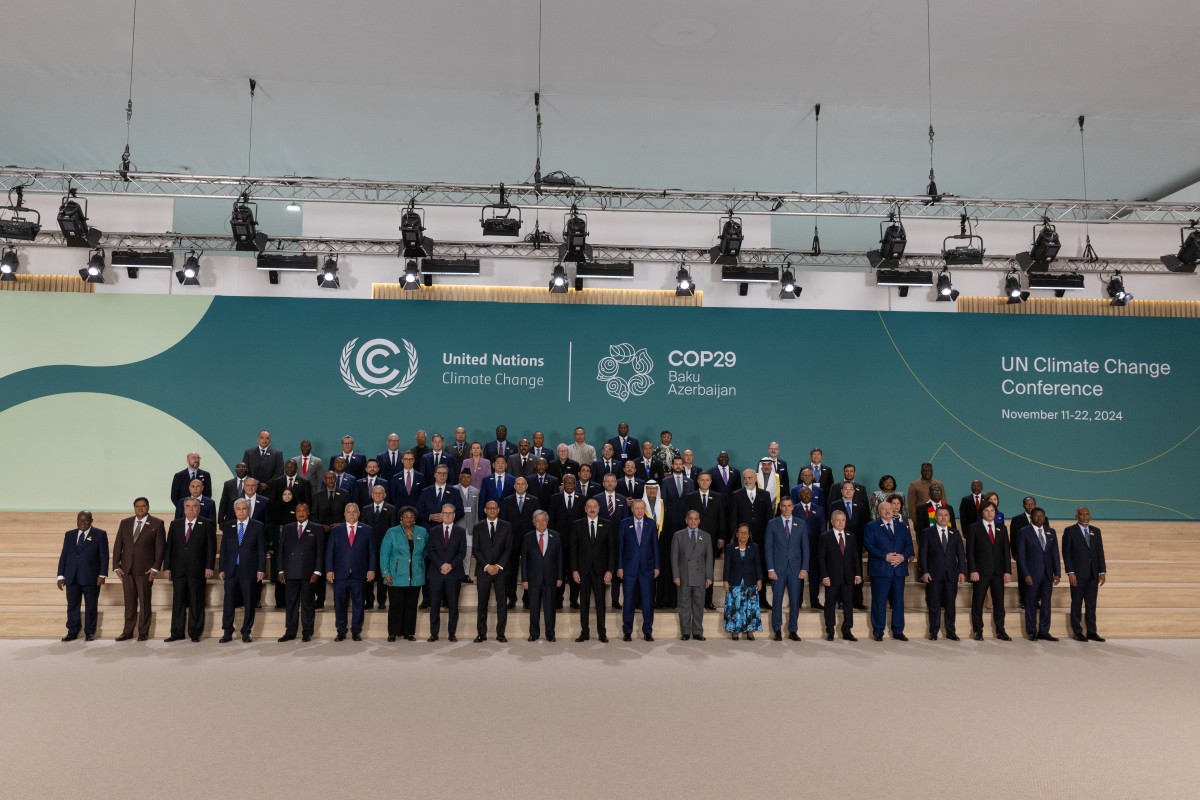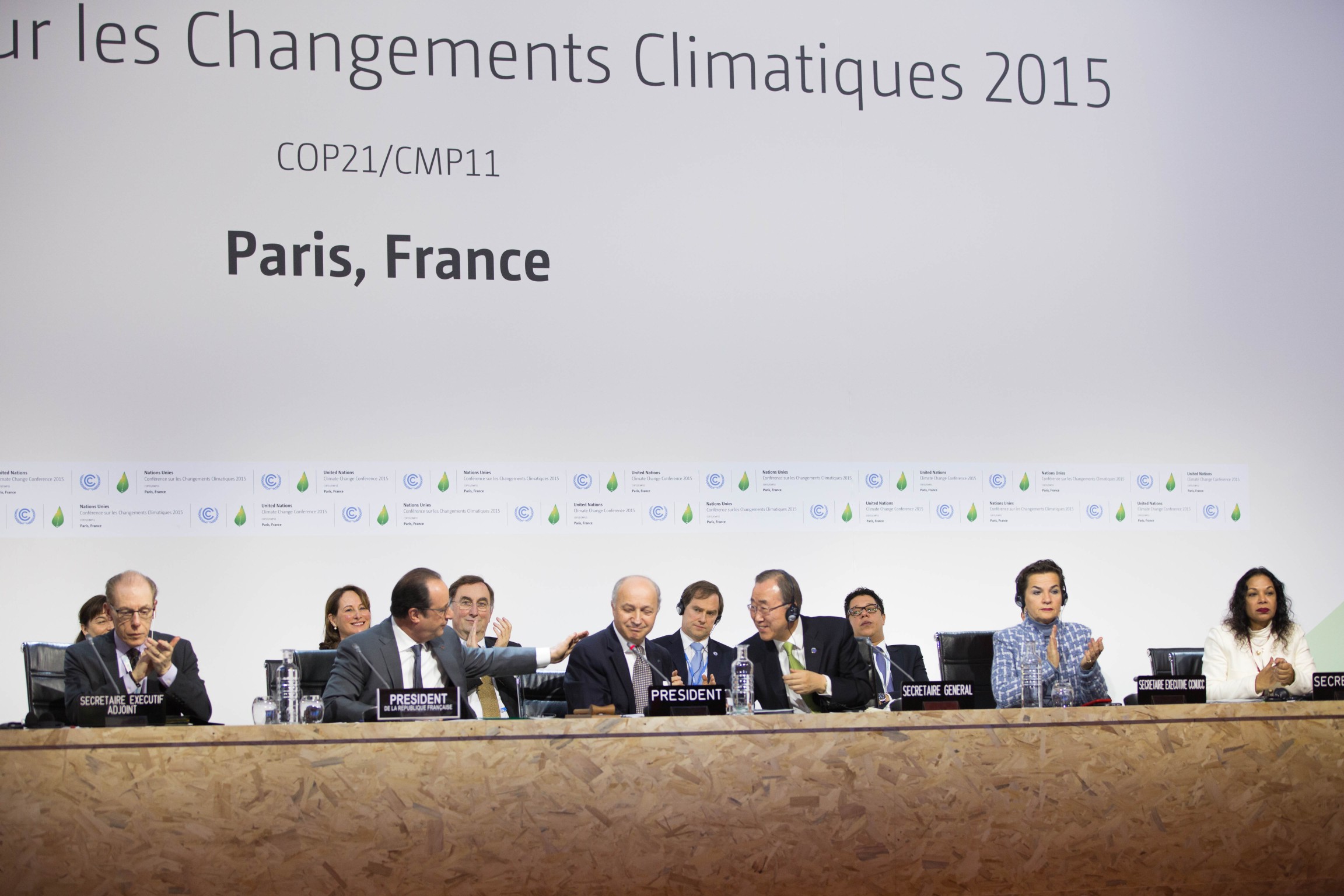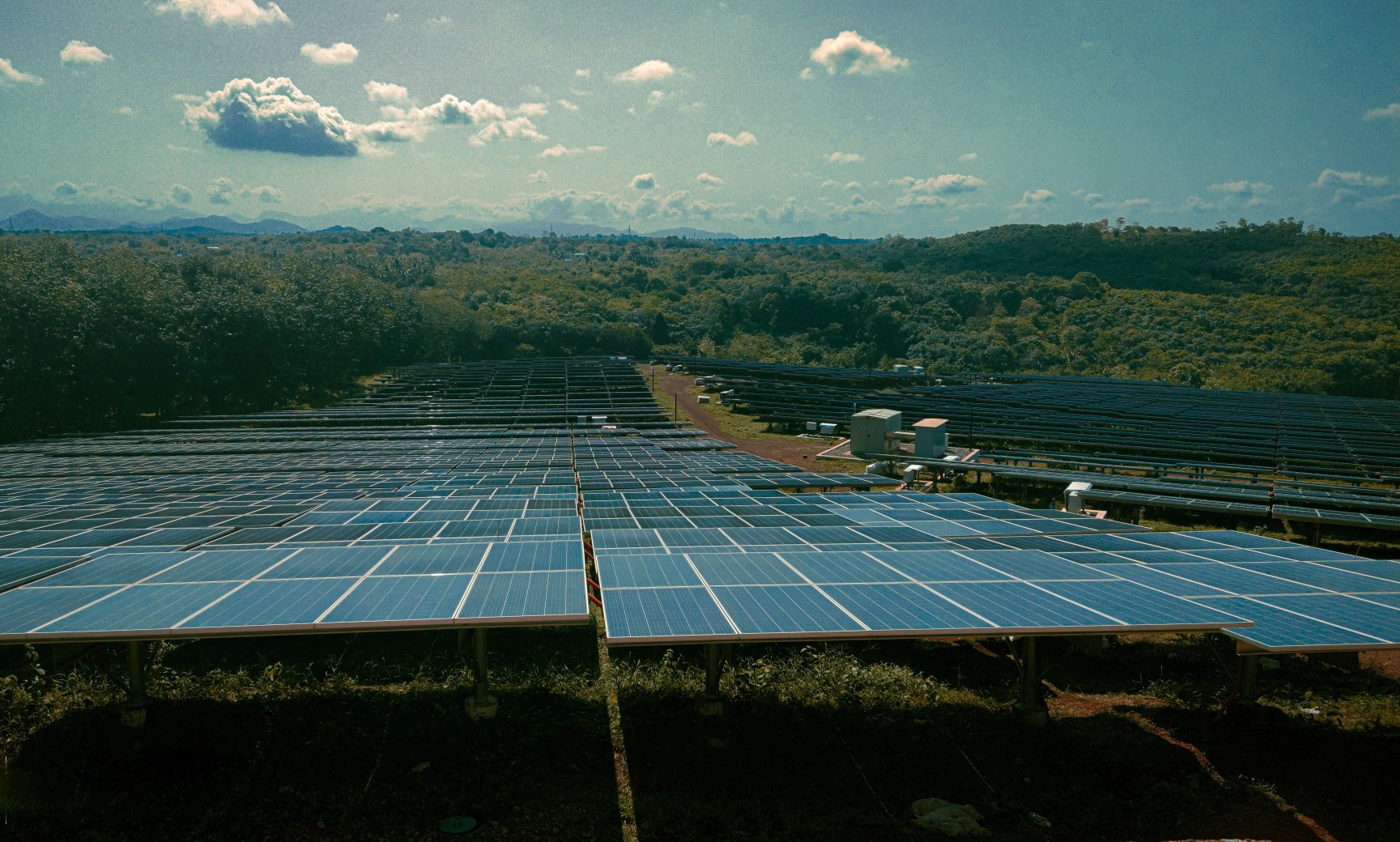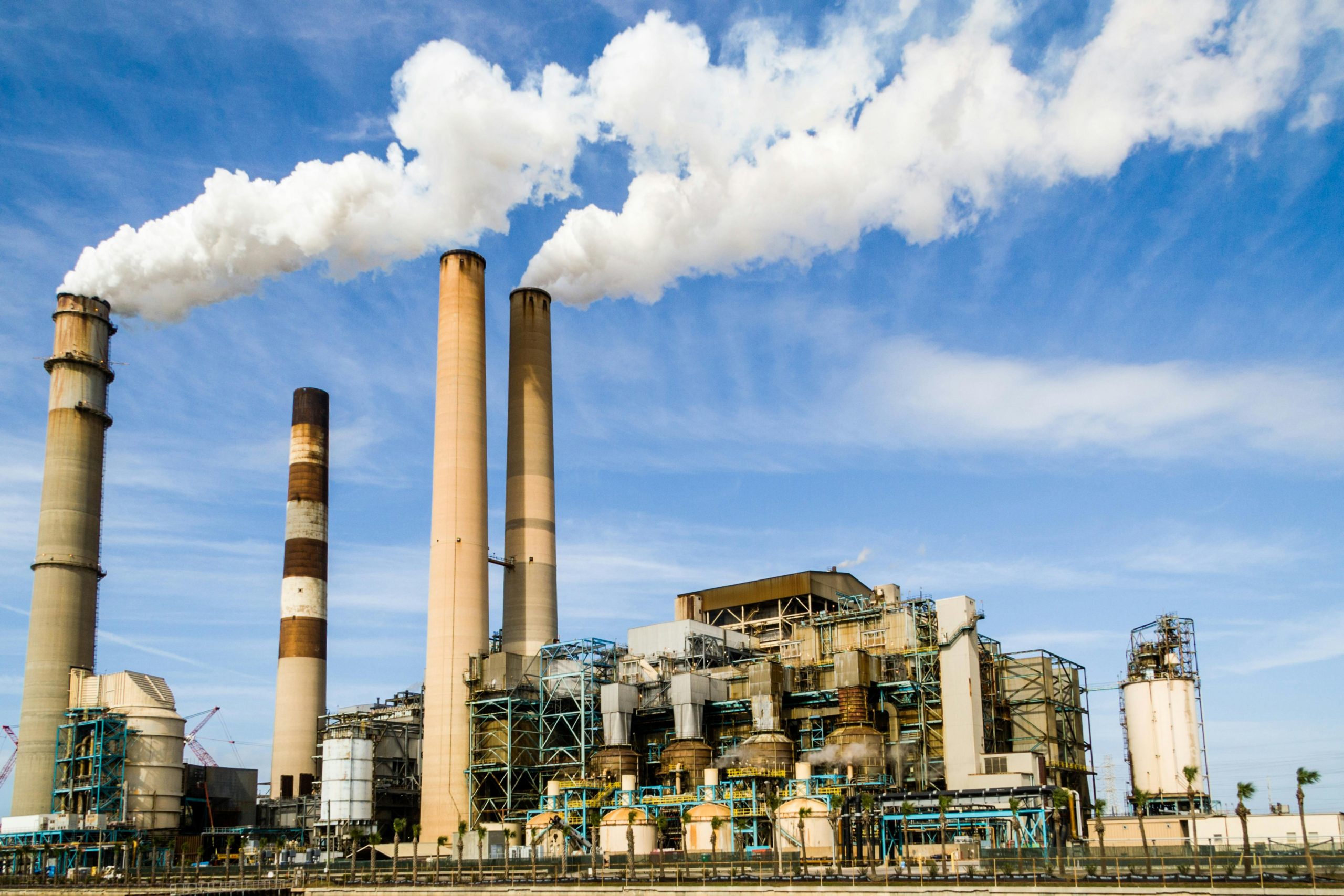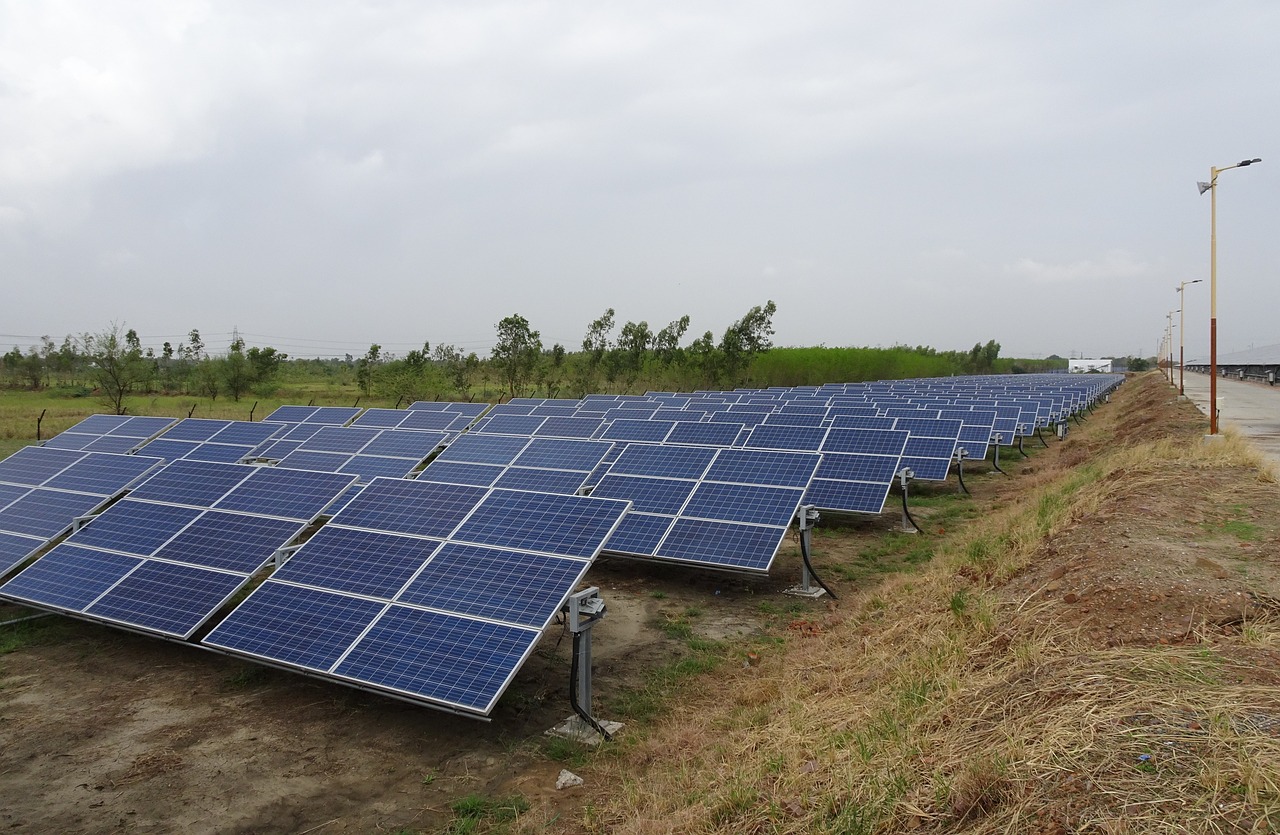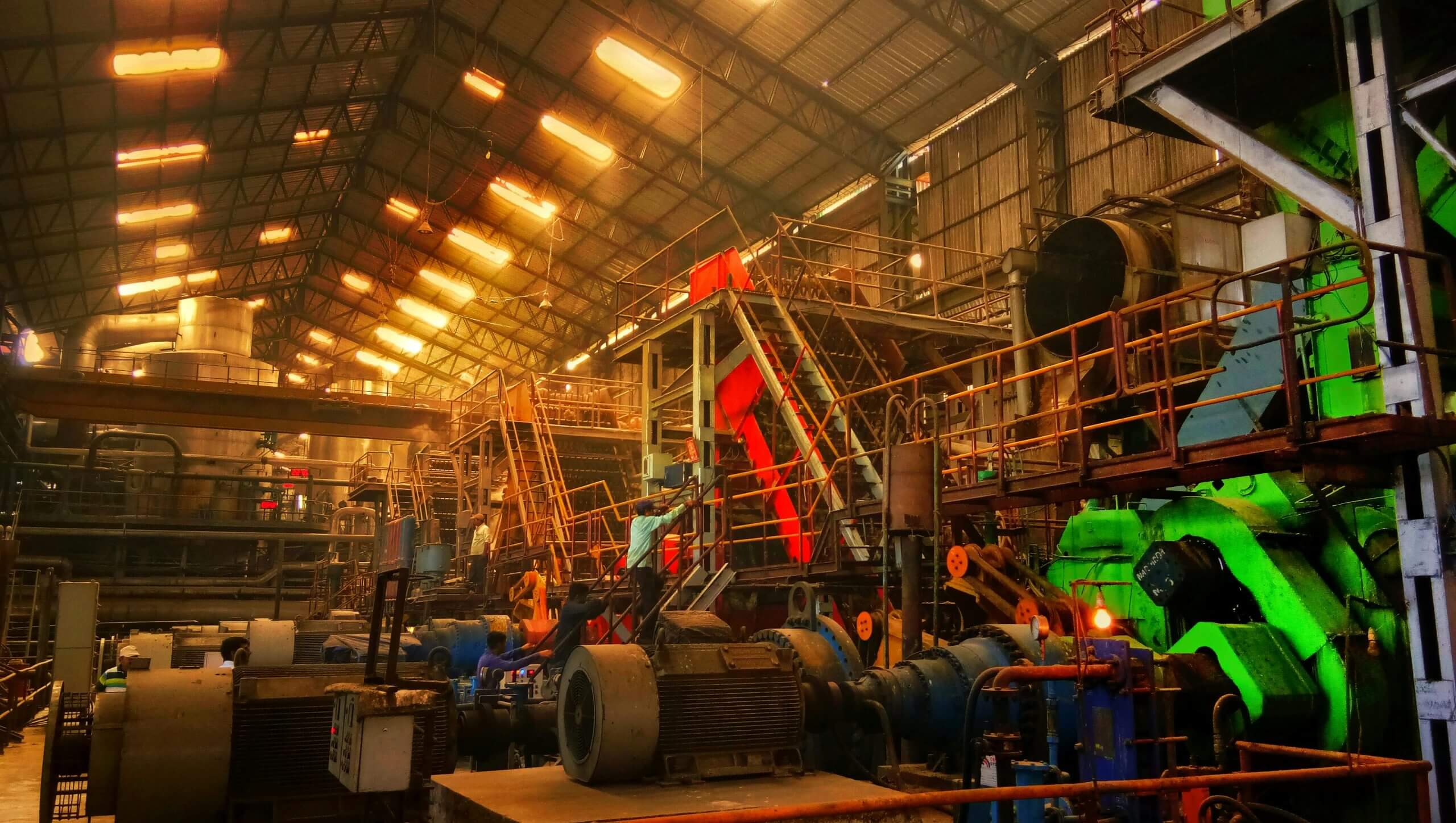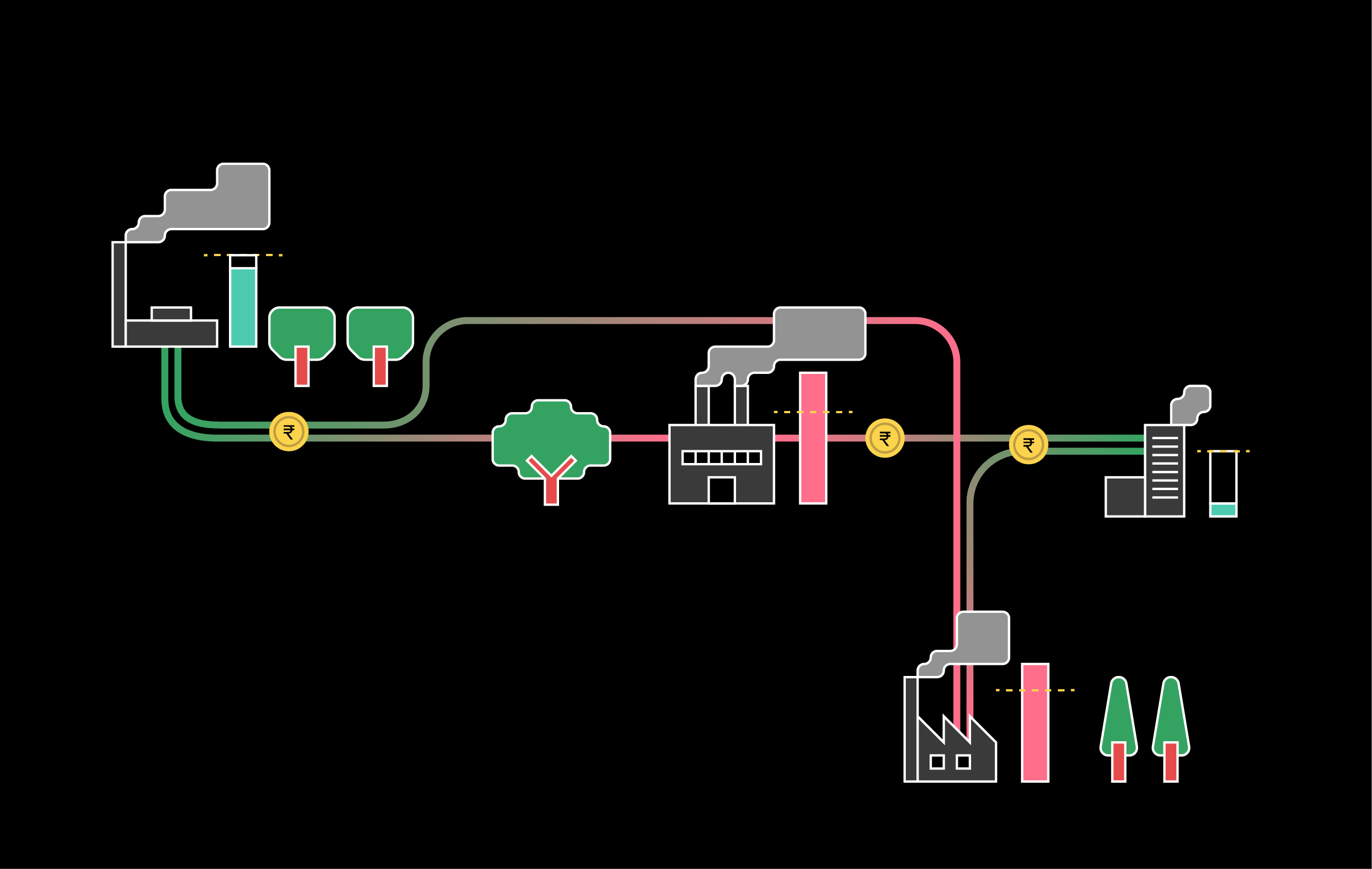Research area: Climate Policy
30 Years of Climate Talks: How Have the COPs Fared and What Next?
Earlier this year, Brazilian President Lula da Silva introduced the concept of mutirão as a guiding idea for hosting COP30 in Belém. Derived from Brazil’s indigenous culture, mutirão refers to the community-wide effort directed towards a shared goal. It is applied to COP30 to emphasise the crucial role of increasingly ambitious national actions in mobilising collective effort towards the climate challenge. This model of multilateralism is an evolution from its vision at the birth of the United Nations Framework Convention on Climate Change (UNFCCC) in 1992, which was more starkly divided between the historical responsibility of the Global North and the needs of the Global South. This commentary reflects on the evolution of climate multilateralism, the challenges it faces, and the ways to strengthen it, drawing on recent developments in climate finance, governance, and trade.
Climate Negotiations Through the Years
The task set before the 198 Parties to the UNFCCC negotiations has been to arrive at various points of consensus on how to limit global warming and respond to its impacts. Differences in national development priorities, political economy contexts, and climate vulnerabilities have led to three decades of politically charged climate talks that have progressed in a lengthy and incremental manner. Climate multilateralism, in its attempts to respond to its own limitations and enable greater consensus in the face of global North-South disagreements, has evolved through multiple phases, which we summarise below.

1992 – 2005: A Top-Down Approach
An early victory for the UNFCCC was the adoption of the Kyoto Protocol in 1997, the first and only international treaty that set legally binding emissions reduction targets for developed countries. In line with the principle of common but differentiated responsibilities and respective capabilities (CBDR-RC), it exempted developing countries from these targets.
At best, the Protocol delivered mixed results. The US, despite being by far the largest emitter, refused to ratify the treaty, and some other developed countries withdrew from it, citing its exclusion of the increasing emissions of emerging economies and the high economic cost of meeting their climate targets. The Protocol’s second commitment period (after 2012) thus saw lower participation from developed countries.
The market mechanisms under the Protocol, operationalised at COP7 (2001), were hindered by weak systems for accounting, reporting, and verification of emission reductions. COP7 also established the Adaptation Fund, the Least Developed Countries Fund, and the Special Climate Change Fund, with guidance to developed countries on financing adaptation in climate-vulnerable countries.
Attempts to formalise the obligations of developed countries, and distinguish between developed and developing countries (Annex I and non-Annex I Parties at the time) through mechanisms such as the Kyoto Protocol, didn’t succeed because sovereignty trumped historical responsibility, revealing the weakness of the Protocol in enforcing its mandate. It became clear that political and economic realities, and not just equity concerns, would also shape negotiations. Moreover, the realisation that countries could simply walk away from binding commitments without any consequences fuelled a crisis of trust among parties.
Concurrently, therefore, the need to encourage greater climate action by developing countries also began to be discussed.
2006-2014: A Growing Voice For Developing Countries
This phase witnessed tussles over the Kyoto Protocol and concerns about the reinterpretation of CBDR-RC. In Bali (2007), Parties launched an action plan to conduct two parallel dialogues; one to discuss the second commitment period for the Protocol, including its updated emissions reduction targets, and the other to deliberate on the long-term commitments of developing countries and those developed countries that were not party to the Protocol. Notably, developing countries agreed to undertake nationally appropriate mitigation actions, provided they were supported by technology and finance.
Subsequently, to sustain progress amid fracturing negotiations in Copenhagen (2009), developed countries committed to mobilise USD 100 billion per year by 2020, including USD 30 billion in fast-start finance for 2010-12. Major developing countries also agreed to voluntarily pledge to reduce and avoid emissions. However, the USD 100 billion commitment suffered from ongoing problems around estimating additionality and weak reporting and verification of flows.
Drafted in a closed-door meeting between the US and the BASIC (Brazil, South Africa, India, and China) countries, the final agreement — known as the Copenhagen Accord — failed formal adoption, deepening mistrust, and exposing fractures between traditional negotiating coalitions. The impasse continued until COP17 in Durban (2011), where Parties decided to arrive at a new emissions treaty by 2015 that would apply to all countries.
The importance of adaptation was also increasingly recognised during this phase, and at COP16 in Cancun (2010), a process was established to enable least developed countries to formulate National Adaptation Plans (NAPs). NAPs would aim to address medium- and long-term needs and build on the more short-term National Adaptation Programmes of Action (NAPAs). Although NAPs have been in existence for over a decade, challenges such as cross-sectoral coordination, delayed and insufficient funding, and lack of data hinder enhanced action. COP16 also established the Green Climate Fund (GCF), which addressed the longstanding demand by developing countries for a dedicated climate fund under the UNFCCC framework.
In this phase, developing countries such as China and India saw rapid economic growth, rising emissions and a greater global heft. Consequently, climate multilateralism’s approach evolved beyond preserving the global North-South distinction to also focus on addressing the carbon-intensive activities of the major emerging economies. The USD 100 billion pledge and the establishment of the GCF were an (inadequate) response to growing developing country calls, acknowledging the critical role of climate finance.
The role of emerging economies was evidenced in 2014, when the US and China jointly announced their climate commitments, an important precursor to securing the Paris Agreement. A month later, at COP20 in Lima, it was agreed that the future Agreement would reflect the principle of CBDR-RC in light of different national circumstances.
2015-2022: Towards a Bottom-Up Approach
The Paris Agreement (2015) represented a significant shift in the nature of multilateral climate cooperation. It introduced a bottom-up structure for emissions reductions in the form of Nationally Determined Contributions (NDCs), a qualitatively different paradigm than the one that had guided negotiations back in 1992.
Countries are now expected to raise their ambitions in line with their national circumstances, based on periodic reviews through a global stocktake. This process of reviewing progress and identifying areas that require urgent action is not legally enforceable, but is legally mandated under the Paris Agreement. The purpose is to assess collective progress to create a facilitative as opposed to punitive basis for action.
Leading up to COP26 in Glasgow (2021), and amid negotiations on how to operationalise the means of implementation, many countries began committing to mid-century net-zero emissions. This phase also saw movement towards laying down rules on national actions, finance, and the trading of carbon credits under Article 6 of the Agreement.
A proliferation of mini-lateral groupings has accompanied the NDC-oriented approach to climate action. Since 2015, more than 475 issue-specific initiatives have been launched, though they have underwhelmed when it comes to delivering results. A case in point is the diminishing influence of the Glasgow Financial Alliance for Net Zero after a string of exits by banks, insurers, asset owners, and investors, due to financial concerns, political backlash, and legal risks.
The post-Paris era has seen a widespread adoption of the climate agenda across stakeholders. However, while the spotlight has been on what actors are doing to raise their ambition, implementation gaps — and challenges related to finance and technology — are yet to be resolved. Without substantive near-term measures, distant net-zero targets risk seeming only like symbolic gestures of climate credibility. Further, the proliferation of mini-lateral initiatives raises questions about whether it builds upon a necessary platform set by multilateralism, or whether it signals fragmentation in multilateral climate cooperation.
2022-Present: Finance, Trade, and Geopolitical Complexities
The climate agenda has become more complex in recent years, reflected in the pursuit of finding intersections between domestic interests around low-carbon development and a fragmenting international landscape.
In 2022, developed countries announced that the goal of USD 100 billion in climate finance was belatedly reached. However, not only was its delay criticised, but its composition and end-uses also came under the scanner. In parallel, the interlinked challenges of climate change, indebtedness, and inequality were better recognised. Acknowledging these, COP27 began to focus on multilateral development banks (MDB) reforms. However, progress has been slow, while vulnerable economies continue to be burdened by debt and limited fiscal space to act.
After years of negotiations, Parties agreed at COP27 (2022) to create a Fund for Responding to Loss and Damage (FRLD), which was operationalised in 2023. The FRLD has received funding pledges totalling USD 789 million (as of June 2025), representing under one per cent of the USD 395 billion required by vulnerable low-income countries.
Significantly, the new collective quantified goal (NCQG) adopted in Baku in 2024 – as an update to the USD 100 billion target – called on developed countries to take the lead in delivering USD 300 billion per year by 2035 for developing countries, but is vague on modalities and encourages voluntary contributions from developing countries. This amount, however, does not come close to meeting the needs of the Global South. A roadmap to the NCQG’s second goal – to scale financing to at least USD 1.3 trillion per year by 2035 – is under discussion.

Linking commitments to action, in the absence of financial, technological and capacity-building support, has been a major sticking point in climate action. Despite consensus on transitioning away from all fossil fuels in energy systems in a just, orderly, and equitable manner, the language of COPs on formulating and implementing transition programmes has been weak. For instance, the Just Transition Work Programme was established at COP27 to facilitate countries in designing their transition pathways but the modalities of implementation are still a work in progress.
Finance has clearly emerged as a barrier to climate cooperation in this phase. The inadequacy of the FRLD, the slow pace of MDB reforms, and the inadequacy of the NCQG clearly highlight this. Climate cooperation has been further complicated by the US’s second withdrawal from the Paris Agreement and other trade and geopolitical headwinds. While COPs have provided a critical platform for deliberating on climate, evidence suggests that progress has been too little, too late.
The Struggles of Multilateralism
To be sure, multilateralism has played a critical role in moving the world to a lower-carbon trajectory. It has given an equal voice to the smallest and most vulnerable countries, and has evolved and expanded its scope over time to better reflect global needs and realities. However, it has not been without challenges.
For a decade, successive COPs have highlighted the inadequacy of NDCs for limiting temperature rise to well below 2°C. The planet breached the 1.5°C global warming threshold for the first time in 2024, and current NDCs put the world on a 2.6-2.8°C pathway. Progress since Paris is real but insufficient, and gaps remain in linking progressive ambition with progressive action.
The NCQG illustrates this problem. It set an inadequate target and failed to specify clear obligations for developed countries. By inviting developing countries to contribute voluntarily, developed countries attempted to sidestep Article 9 of the Paris Agreement, which assigns them clear financial responsibility.
This tendency towards inadequate and unmet promises has been an ongoing feature of climate multilateralism. It can be attributed to countries’ prioritisation of their domestic economic and developmental interests, the weak enforcement capabilities of the UNFCCC coupled with the challenges of a consensus-based approach, legacy institutional and governance structures — including those of MDBs — that under-represent the Global South, vested interests and lobbying by the fossil fuel industry, and a historical framing of the climate problem as a techno-economic one that is narrowly focused on quantifications of emissions.
To be future-ready and remain economically competitive, domestic actions are increasingly prioritised in the Global North. Beyond undermining cooperative approaches, this comes at the expense of supporting adaptation in the Global South. The Global Goal on Adaptation, for instance, emphasises the mainstreaming of adaptation, but the financial means to achieve this remain limited. The Glasgow goal of doubling adaptation finance to USD 40 billion a year by 2025 is set to be missed. By 2035, developing countries will require twelve times more adaptation finance than is currently provided through international public funding.
Questions around the integrity of the COP decision-making process, and its lack of scrutiny of conflicting interests, pose a challenge to the effectiveness of climate talks. It took 28 years for countries to merely start talking about transitioning away from fossil fuels, while fossil fuel interests continue to shape the climate agenda; 1773 fossil fuel lobbyists were present at the last COP, outnumbered only by the delegations from Azerbaijan, Brazil, and Turkiye.
The COPs struggle to manage the complex political dimensions of climate action, including shifts in the global political economy, rising protectionism, the unpredictability of major powers, and a general decline in trust in multilateral institutions. These dimensions are driving a new wave of unilateral measures towards climate-related trade protectionism. The EU’s Carbon Border Adjustment Mechanism (CBAM) serves as such an example. Back in 2010, countries had agreed to implement response measures to deal with the adverse cross-border effects of domestic mitigation policies, but the polarisation around this issue now hampers meaningful progress.
As the COP process evolves to incorporate a wider set of issues and challenges, its response to existing demands for urgent action has not inspired sufficient confidence. Competing political, economic, and institutional interests by various actors have contributed to the sluggish movement of global climate cooperation.
What Lies in the Future for Climate Multilateralism
Like any global framework, avenues for climate cooperation are shaped by the changes in the larger political and economic environment. With advanced economies focusing on reindustrialisation and onshoring of manufacturing, climate concerns have taken a back seat in policymaking. This is exacerbated by the populist backlash against climate regulations and decarbonisation, strengthening political opposition to the transition.
Amidst this uncertainty, an enticing option for countries is to retreat and/or opt for bilateral and minilateral deals that can deliver both climate and trade benefits in a predictable manner, while protecting their narrower economic interests. These coalitions can complement multilateralism by enabling targeted climate actions, but they risk limited legitimacy, low ambition, and weak accountability.
Multilateralism remains central to continued climate cooperation. Its revival will require better reflecting the principle of CBDR-RC, while addressing the legacy inefficiencies of the UNFCCC. Climate discussions will also need to create channels of active engagement with multilateral trade, industrial, and financial frameworks, all with greater speed and urgency than in the past.
As countries submit their third NDCs, an open dialogue at COP30 on how global economic restructuring affects national actions – and vice versa – could help revive multilateralism. For instance, COP30 will launch a forum on climate and trade that can provide an impetus for collaboration in areas that lie at the climate-trade nexus, something that is essential to prevent the conflicts arising from violations of trade rules by policies aimed at addressing carbon leakage.
For the effective implementation of greater climate ambition, it is crucial that multilateral decision-making responds nimbly to uncertainties around the global economy, prioritises long-term needs over short-term interests and short-term actions over long-term platitudes, and deepens collaboration targeted towards systemic shifts. Going forward, substantive progress will depend on the ability of climate multilateralism to translate goals into equitable and practical steps.
Who Owns Tomorrow’s Emissions?
India’s Solar Crossroads: Borrowing Innovation or Building Its Own?
India’s solar journey represents a compelling narrative of rapid deployment and ambitious targets with headlines celebrating milestones such as surpassing 100 GW of installed solar power capacity. However, behind these impressive numbers lies a structural vulnerability. Unlike China or the US, India’s solar research, development and demonstration (RD&D) base is still evolving and scaling. Public spending on RD&D remains modest, and most projects focus on small, incremental improvements, as we outline below. The result is a cycle where manufacturing relies heavily on imported technologies, leaving India vulnerable to shifts in global supply chains. India imports 56% of its solar cells and 65% of its modules, over 80% of which come from China.
This raises a crucial question: can India break this cycle by balancing investment in frontier solar technologies that could shape the future, and by scaling up established technologies that already dominate the market? The answer will have lasting implications for India’s energy security, technological self-reliance, and global competitiveness.
Mapping India’s Public Solar RD&D Landscape

A look at the project mix shows India is placing its bets mostly on tried-and-tested technologies. As the visual suggests, India’s public RD&D portfolio is dominated by traditional crystalline silicon photovoltaic (PV)1 technology, the current workhorse of the global solar industry. Institutions such as National Institute of Solar Energy (NISE) and the National Centre for Photovoltaic Research and Education (NCPRE) at IIT Bombay are actively conducting RD&D to increase the efficiency of silicon cells supported by the Ministry of New and Renewable Energy (MNRE).
Perovskite cells2 account for about 10% of projects, signalling some diversification into emerging areas. IIT Bombay and IIT Roorkee have recently developed silicon–perovskite tandem cells with 28% and 29.14% efficiency respectively well above the 20–22% efficiency typical of today’s crystalline silicon modules. The IIT‑Bombay incubated startup Art‑PV India has secured a $10 million MNRE grant to manufacture high-efficiency perovskite tandem solar cells, signalling a move toward commercialisation. Perovskites are attractive not just for their efficiency potential but also for their relatively low cost and flexibility, qualities that align with India’s long-standing emphasis on affordability in solar policy.
Encouragingly, India is also exploring areas gaining global traction in technologies such as floating solar PV3, which leverages the country’s vast network of reservoirs. Floating systems face unique design challenges, particularly around hydrodynamic performance – how panels and platforms withstand water movement, wind, and waves. Although the current focus is more on deployment than innovation, as India moves beyond pilot projects with NTPC commissioning over 200 MW of commercial floating PV, there remains considerable scope for further research in this area.
However, cutting-edge technologies such as TOPCon4, Heterojunction (HJT) cells5, and Building-Integrated Photovoltaics (BIPV)6 clubbed under the ‘other’ category in fig. 1 remain relatively underexplored within India’s RD&D ecosystem, despite gaining significant global momentum and attracting substantial investments in countries such as China, the US, and Germany. While India is pursuing some initial research in these areas, dedicated large-scale RD&D, prototyping, and commercialisation efforts are not yet focus areas.
Similarly, there are minimal RD&D projects in areas like Quantum Dot7 & Organic PV8 or CdTe Thin-Film9, which are seeing targeted investments globally for flexible, transparent, and specialised PV applications. Even in Concentrated Solar Power (CSP)10, India’s RD&D focus has not shifted towards the hybrid models and next-generation technologies being pursued by global leaders. Whether these reflect strategic choices to avoid competing head-on in crowded areas, or the absence of coordinated prioritisation or availability of necessary skills and technical know-how to do research in these technologies remains an open question, but it highlights the need for greater clarity in defining India’s solar RD&D priorities.
Strategic Dilemma: Align or Diverge?
A robust public RD&D ecosystem is crucial if India wants to reduce dependency on other countries while also capturing the economic opportunities and strategic advantages that come with innovation. Public investments are especially crucial in sectors like clean energy where private investment tends to limit its focus on near-commercial technologies that can be scaled, and long-horizon, high-risk innovation relies heavily on public funding.
But beyond individual technologies, India faces a broader set of strategic questions:
– Should it align more closely with global RD&D trajectories in solar technologies or are there strategic advantages to selective misalignment and funding diversion?
– Should it seek to catch up on technologies already at advanced Technology Readiness Levels (TRL) and Market Readiness Levels (MRL) elsewhere, or concentrate its limited resources on areas where it can carve out leadership?
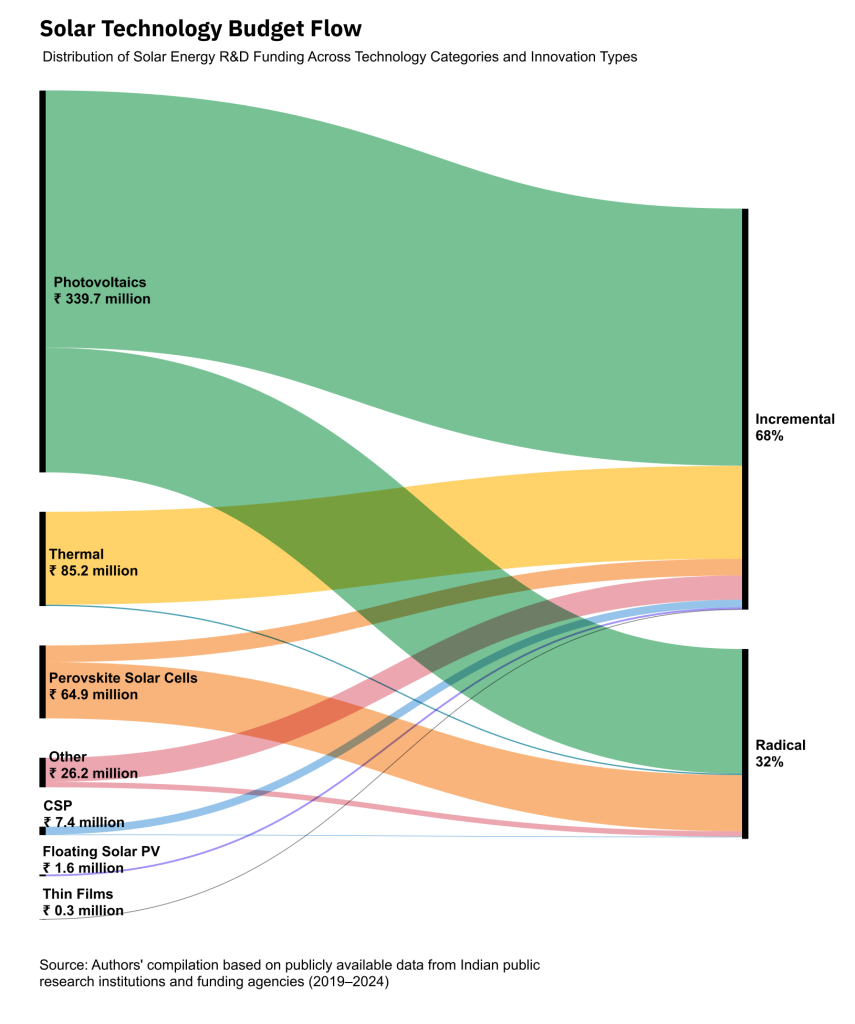
As Figure 2 shows, nearly most public RD&D funding is directed towards incremental innovation, with only about one-third flowing into development of radical next-gen technologies. This tilt toward refining existing technologies raises deeper questions about whether such a tilt is optimal for the long term and what trade-offs it creates for technological self-reliance, competitiveness, and the ability to shape future solar technologies.
On the one hand, alignment with global RD&D offers several benefits. It reduces the risk of technological irrelevance and allows India to capitalise on global breakthroughs by adapting them to Indian conditions many of which, like perovskite-silicon tandems, are sensitive to heat, humidity, and material interfaces, and thus require local RD&D for testing, durability optimisation, and eventual deployment. Alignment can also boost India’s position in global value chains and bolster global competitiveness, attract international capital and fast track entry into emerging markets. Countries like China and the US have leveraged this model to rapidly scale technologies through coordinated public-private RD&D and commercial deployment. For India, alignment would involve investing more in established innovation pathways, adapting them to local conditions, and pursuing technology cooperation and co-development to strengthen domestic capacity.
On the other hand, full alignment may carry hidden risks and sovereignty costs. From a technology sovereignty perspective, over reliance on foreign innovation can entrench dependency on imported intellectual property, materials, and manufacturing equipment. This is particularly problematic in a geopolitically volatile and protectionist world where technological control is increasingly tied to economic and strategic power. Moreover, late entry into areas where global leaders such as China already dominate, could lead to diminishing returns on investment, little domestic IP creation and the inability to leapfrog. Instead, India might do better to leapfrog into underexplored or emerging areas where global consensus is less settled, such as hybrid CSP-PV systems tailored for India’s thermal-rich grid context.
The Way Forward
India would benefit from an solar RD&D strategy that balances alignment with global trends and selective divergence, reflecting comparative strengths such as a cost-competitive manufacturing base, diverse climatic zones for technology testing, and experience in off-grid deployment models. Current funding mechanisms are often fragmented, and early-stage academic research, with limited funding for prototypes, pilots and testing, and industry co-leadership hinders technology progression from the lab to the market. The recently announced Rs 1 lakh crore Research, Development and Innovation (RDI) Scheme offers an opportunity to address some of these weaknesses if directed towards higher-TRL solar innovation and bridging the academia-industry gap.
India’s clean energy future cannot solely rely on the deployment of imported technologies. While rapid installation is commendable, true long-term competitiveness and energy sovereignty demand a parallel commitment to indigenous innovation. India doesn’t need to lead in every single aspect of solar technology, but it must strategically choose areas where it can build expertise, drive innovation, and ultimately, design its solar future.
Footnotes
- Crystalline silicon photovoltaic (PV) refers to solar cells made from crystalline silicon, a semiconductor material, that converts sunlight into electricity through the photovoltaic effect. ↩︎
- A perovskite solar cell is a type of solar cell that employs a metal halide perovskite compound as a light absorber. They offer high potential for efficiency, low-cost production, and flexibility but currently face challenges with stability and lead toxicity. ↩︎
- Floating PV systems are mounted on a structure that floats on a water surface and can be associated with existing grid connections, for instance in the case of dam vicinity. ↩︎
- TOPCon stands for Tunnel Oxide Passivated Contact. It’s a type of solar cell technology that improves efficiency by using a thin, tunnel-shaped oxide layer to reduce charge carrier recombination and enhance carrier selectivity. This results in higher power output compared to traditional solar cells. ↩︎
- Heterojunction (HJT) solar cells, also known as Silicon Heterojunction (SHJ) cells, are a type of solar cell that combines the advantages of crystalline silicon (c-Si) and thin-film technologies. ↩︎
- Building-integrated photovoltaics (BIPV) refers to the integration of photovoltaic (PV) solar technology into the building’s structure, effectively replacing traditional building materials like roofing or siding. BIPV serves a dual purpose: generating electricity while also fulfilling a structural function as part of the building envelope. ↩︎
- A quantum dot solar cell is mainly the type of cell design which makes use of quantum dots as the key absorbing photovoltaic material. ↩︎
- Organic photovoltaics (OPV), also known as organic solar cells, are a type of solar cell that utilises organic materials, specifically polymers or small molecules, to convert sunlight into electricity. Unlike traditional silicon-based solar cells, OPVs are known for their flexibility, light weight, and potential for low-cost manufacturing. ↩︎
- A CdTe (Cadmium Telluride) thin-film solar cell is a type of photovoltaic (PV) device that uses a thin layer of cadmium telluride as the light-absorbing material to convert sunlight into electricity. It is a thin-film solar technology because the active layer (CdTe) is very thin, typically a few microns thick, compared to traditional silicon solar cells. ↩︎
- Concentrated Solar Power (CSP) is a renewable energy technology that generates electricity by using mirrors or lenses to concentrate a large area of sunlight onto a small receiver. ↩︎
We would also like to thank Mayank Munjal for his help in designing the visuals featured in this piece.
Researching Climate Policy in Uncertain Times
What Does Net-Zero Mean? Defining Goals Aligned With National Contexts
Introduction
Net-zero emissions targets have emerged as a central pillar of global climate ambition. As of June 2025 (following the US’s second withdrawal from the Paris Agreement), 142 countries have announced—or are considering—net-zero targets. Together, they account for nearly 76% of global greenhouse gas (GHG) emissions and 84% of the world’s population. However, these targets vary in scopes and timelines, reflecting differences in historical responsibility, development needs, domestic capabilities, political realities, and economic structures. Developed economies like the European Union and Japan target reaching net-zero by 2050, while China aims to reach it by 2060. India has committed to achieving net-zero emissions by 2070.
As India gradually pivots towards a net-zero pathway, it is crucial to establish a clear, shared understanding among national and sub-national governments, policymakers, regulators, industries, and civil society of what ‘net-zero’ truly means in the domestic context. Without this coherence, strategies risk being fragmented or misaligned across levels of governance and sectors of the economy.
This issue brief outlines key considerations that can help shape a comprehensive definition of net-zero emissions for India, not by prescribing implementation strategies, but by deconstructing net-zero targets by their constituent elements necessary for clarity, comparability, and accountability. The brief discusses these elements across four aspects: [1] Targets reflect “what” the entity aims to achieve and whether interim milestones are included. [2] Scope defines “what all is covered”. To put into perspective, two entities may share the same headline target but differ significantly in coverage. [3] Sinks and Offsets clarify how residual emissions will be addressed, and what forms of carbon removals are deemed acceptable, credible, and verifiable. [4] Governance encompasses institutional arrangements for reporting, monitoring, and review. Ensuring that those responsible for delivering on targets are held to account through appropriate mechanisms, incentives, and oversight structures.
Taken together, these dimensions form the building blocks of a robust net-zero definition. The brief’s objective is to support India in deciding the design of the end-goal itself, rather than outlining the path to reach it.
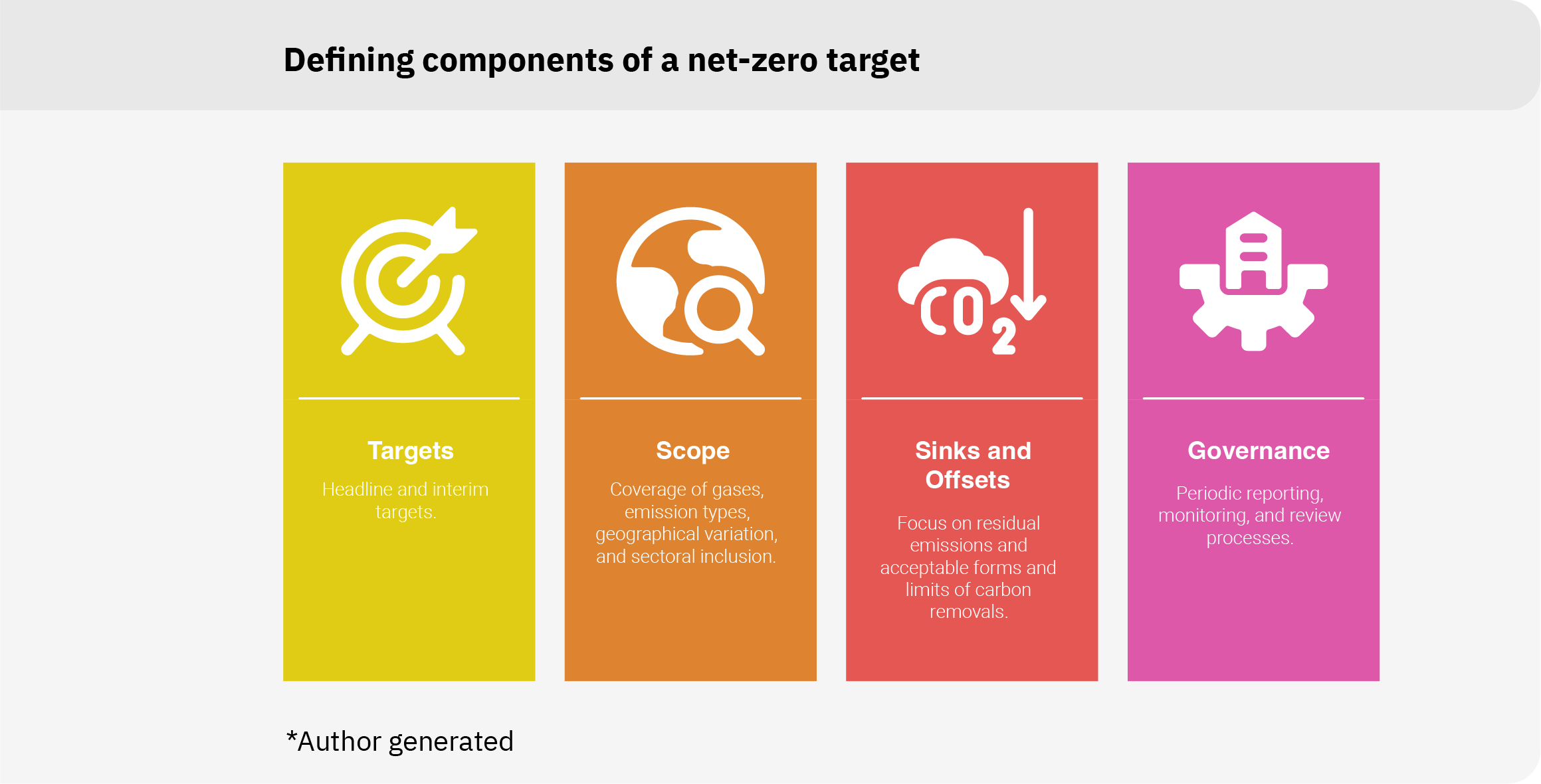
One Lakh Crore for Innovation: Getting Strategic About Clean Energy R&D
The Union Cabinet’s recent approval of the ₹1 lakh crore Research, Development, and Innovation (RDI) Scheme marks a potentially transformative moment for India’s technology and industrial policy. Overseen by the Anusandhan National Research Foundation (ANRF), under the Department of Science and Technology (DST), the scheme aims to catalyse private sector investment in sunrise sectors such as clean energy, climate-tech, deep-tech, and artificial intelligence (AI). If strategically implemented, it could fill a long-standing gap in India’s clean energy innovation ecosystem and help position the country as one of the major technology leaders over the coming decades by providing patient capital for emerging technologies.
Investing in clean energy research and development (R&D) is not only central to achieving technological self-reliance under the 2047 Viksit Bharat vision, but a lever to capturing the industrial and economic gains of the global energy transition. As countries ramp up their energy transition efforts, emerging technologies such as green hydrogen, advanced batteries, and next-gen solar are becoming the foundations of new industrial value chains. The IEA estimates that clean energy technology manufacturing could generate a global market worth over $650 billion annually by 2030, over three times current levels.
India’s green industrial ambitions, reflected in flagship schemes like the Production Linked Incentives (PLI) for solar and batteries, and the National Green Hydrogen Mission, often depend on technologies that are either imported or underdeveloped domestically, exposing a gap between manufacturing goals and technological capabilities. This disconnect weakens India’s competitiveness and increases vulnerability to shifting global priorities and geopolitical uncertainties, thus reinforcing the urgency of aligning industrial policy with a coherent innovation strategy.
India’s Innovation Funding Gap in Clean Energy
Though there is growing recognition that R&D is essential to building a robust manufacturing ecosystem, India has historically underinvested in R&D relative to its peers. India’s overall R&D expenditure is approximately 0.64% of GDP, well below global leaders such as China (2.4%) and the United States (3.5%) in 2020-21. This gap is even bigger when seen in absolute terms; in 2021, the United States spent $828 billion on R&D and China $427 billion, while India’s estimated spending was $17-18 billion. Moreover, public investment is concentrated in academic institutions, typically with weak industry linkages and limited translation to demonstration, commercialisation, and scale diffusion.
SFC’s ongoing review of publicly-funded clean energy R&D projects indicates that such funding predominantly flows towards incremental improvements in mature technologies such as crystalline silicon solar cells and lithium-ion batteries. While incremental R&D is necessary, its impact is limited when disconnected from industry needs and market deployment. At the same time, support for emerging technologies such as perovskite photovoltaics, redox flow batteries, and solid-state storage is still at a nascent stage.
Also stark is the absence of private industrial R&D, which accounts for less than 40% of R&D spending in India, compared to over 71% in the United States, 76% in South Korea, and 70% in China. Private R&D plays a pivotal role in translating early-stage discoveries into commercially viable technologies. However, climate-focused ventures continue to face acute and worsening challenges in capital intensity, infrastructure, and scale, leading to private investments in climate tech falling from US$3.4 billion in 2023 to just US$1.3 billion in 2024. Most ventures struggle to move beyond the early stages, as energy and climate tech solutions often require significant upfront investment, highlighting the need for policy interventions such as the RDI to de-risk capital.
These gaps in public and private R&D funding are mutually-reinforcing; when public funding remains focused on incremental projects without clear commercial pathways, and private capital avoids early-stage risk, promising technologies struggle to advance. The RDI Scheme is a necessary step in the right direction to overcome this. While there is a need to increase funding at all stages, by targeting the underfunded mid-to-late stages of the innovation process and incentivising private sector participation, it can help strengthen the overall pipeline and improve coordination between research and industrial deployment.
What Strategic R&D could look like
To enhance the effectiveness of the RDI Scheme and ensure it delivers on its intended goals, the following actions may be worth considering:
1) Targeted prioritisation of technologies:
RDI funding should focus on a targeted set of high-impact, context-relevant technologies where early support can de-risk innovation and attract private investment for commercial scale-up. Prioritisation should reflect where public and private R&D can most effectively complement each other.
2) Develop technology foresight and sectoral roadmaps:
To avoid reactive or fragmented investments, India must embed strategic foresight into the RDI Scheme. The ANRF and DST can commission regularly updated roadmaps across different technologies to help identify priority areas, anticipate technology shifts, align R&D pipelines with industrial goals, and periodically review progress.
3) Define success through commercialisation:
Outcomes must be tracked using indicators such as number of pilots deployed, technologies reaching Technology Readiness Level (TRL) 8–9, public-private co-investments, and patent-to-product conversion. Academic output alone is not a sufficient performance metric for high-TRL innovation finance.
The RDI Scheme is an opportunity to build the foundation for a globally competitive, low-carbon economy. But its success will depend on strategic clarity, capable institutions, and a clear link between innovation and deployment. If done right, it can help shift India from a technology importer to a clean-tech leader.
The Climate Challenge as a Development Opportunity
What Shapes Green Industrial Policy Objectives and Design? A Comparative Policy Analysis of Renewable Energy Auctions in India and South Africa
Abstract
The article compares the renewable energy auctions of India and South Africa, two countries with different institutional approaches to governing markets and different political-economic constraints, to understand how these factors shaped similar policy objectives to be prioritised differently through their auction design. It finds that India’s market-based governance approach and its electricity sector politics resulted in the prioritisation of electricity price objectives while South Africa’s developmental state approach prioritised industry localisation and employment creation objectives through policy design. The survival of India’s politics-centered approach over South Africa’s problem-centered policy design has implications for countries implementing multiple-objective policies.
Read moreThe Indian Carbon Market: Institutional, Regulatory, and Market Considerations
Introduction
India is at a critical juncture in its climate policy journey. In the near-term, it aims to reduce the emissions intensity of its GDP by 45% below 2005 levels by 2030. Its longer-term goal is to reach net-zero emissions by 2070. Meeting these targets will require a combination of policy interventions, technological advancements, regulatory mechanisms, and financial support.
As part of this broader transition, India is developing a national carbon market under the Energy Conservation (Amendment) Act 2022 (See Fig. 1 for a timeline of developments around the CCTS). The Carbon Credit and Trading Scheme (CCTS), notified by the Ministry of Power (MoP) in June 2023, lays the foundation for a carbon market that seeks to balance economic growth with climate goals.
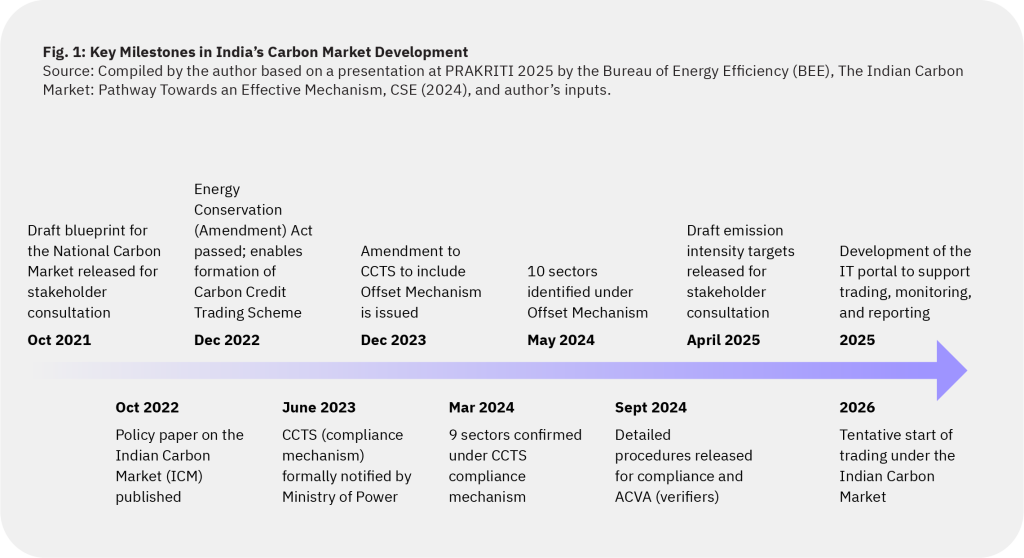
The effectiveness of the CCTS will depend on several interlinked factors- clear governance structures, credible price signals, transparent processes, institutional capacity, and harmonisation with existing domestic programs and global frameworks. Recognising the complexity of these issues, Prayas Energy Group (PEG) and Sustainable Futures Collaborative (SFC) convened a closed-door roundtable under the Chatham House rules on March 20, 2025 in New Delhi, which brought together participants from across policy think tanks, regulatory consultancies, industry, industry associations, and civil society organisations. It served as a platform to exchange diverse perspectives on the institutional, regulatory, and market-related elements of the CCTS. This brief reflects the key insights that emerged from the discussion, highlighting seven broad yet interlinked issues central to the design and operationalisation of the CCTS.

